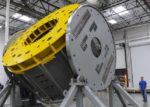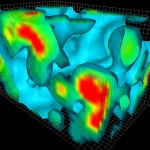Engineers at General Atomics have completed fabrication of the first ITER Central Solenoid Module for nuclear fusion. When the ITER fusion energy project in France powers up in 2025, its first operations will be enabled by the largest pulsed superconducting magnet ever built – a magnet that has roots in Southern California.
Podcast: ECP EXAALT Program Extends the Reach of Molecular Dynamics
Computationally, EXAALT’s goal is to develop a comprehensive molecular dynamics capability for exascale. “The user should be able to say, ‘I’m interested in this kind of system size, timescale, and accuracy,’ and directly access the regime without being constrained by the usual scaling paths of current codes,” said Danny Perez of Los Alamos National Laboratory (LANL) and the EXAALT team.
QCD Optimization on Intel Xeon Phi
“Many optimizations can be performed on an application that is QCD based and can take advantage of the Intel Xeon Phi coprocessor as well. With pre-fetching, SMT threading and other optimizations as well as using the Intel Xeon Phi coprocessor, the performance gains were quite significant. An initial test, using single precision on the base Sandy Bridge systems, the test case was showing about 128 Gflops. However, using the Intel Xeon Phi coprocessor, the performance jumped to over 320 Gflops.”
Video: Supercomputing for Nuclear Fusion
In this video from the World Economic Forum, Santiago Badia from the Universitat Politècnica de Catalunya in Barcelona introduces some of the challenges of working to make safe, efficient nuclear fusion a reality by 2040.







